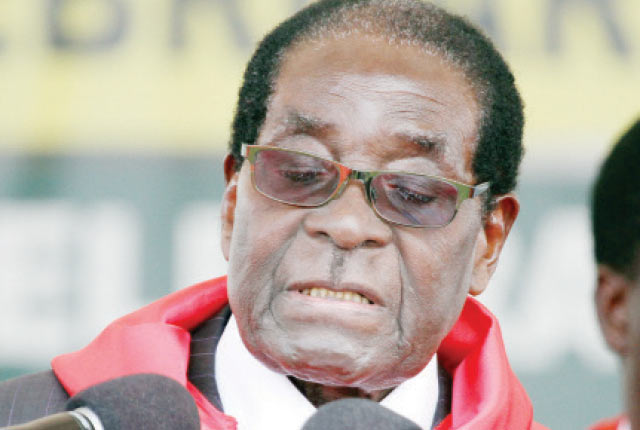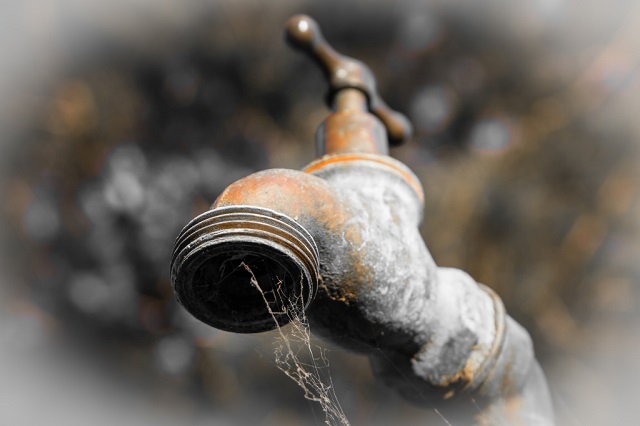Zim records progress in disaster preparedness

Mabasa Sasa in CANCUN, Mexico
ZIMBABWE has since 2015 registered significant progress in meeting the requirements of the Sendai Framework that seeks to boost countries’ resilience in the face of disasters.
This emerged ahead of the 2017 Global Platform for Disaster Risk Reduction in Cancun, Mexico, which officially opened yesterday.
President Mugabe is leading Zimbabwe’s delegation to the United Nations Office for Disaster Risk Reduction-organised meeting of world leaders, experts and NGOs.
Zimbabwe’s Head of State and Government was expected to address the Leaders Forum at the Global Platform Wednesday evening (early Thursday morning Zimbabwe time).
President Mugabe is accompanied by ministers Simbarashe Mumbengegwi (Foreign Affairs), Saviour Kasukuwere (Local Government), and Oppah Muchinguri-Kashiri (Water, Environment and Climate).
The Sendai Framework sets out seven targets to improve livelihoods in a sustainable manner by building resilience to disasters, also referred to as the 2030 Agenda.
Officials in Zimbabwe’s delegation yesterday said the country had started “operationalising and implementing the four priorities of the Sendai Framework”.
These are: understanding disaster risk; strengthening disaster risk governance to manage disaster risk; Investing in disaster risk reduction for resilience; and enhancing disaster preparedness for effective response and to “build back better” in recovery, rehabilitation and reconstruction.
Zimbabwe, they noted, was – among other measures – doing this by focusing on preventing new and reducing existing risk through “implementation of integrated and inclusive economic, structural, legal, social, health, cultural, educational, environmental, technological, political and institutional measures that prevent and reduce hazard exposure and vulnerability to disaster”.
“The Government of Zimbabwe has made significant strides in meeting the 2020 target where we are required to come up with comprehensive national and sub-national disaster risk strategies aligned to the Sendai Framework for Disaster Risk Reduction.
“The whole essence of this target is to ensure that disaster risk reduction is incorporated and mainstreamed in the economic planning agenda of the country.
“Guided by the Zimbabwe Agenda for Sustainable Socio-Economic Transformation, whose implementation is aligned to the UN Sustainable Development Goals, the negative impact of disasters and risks are being addressed significantly in the various sectors of development such as agriculture and irrigation, health, education, energy and transport infrastructure, water and climate,” a senior Government official said in a brief.
Another official said the progress was being achieved notwithstanding El Niño-induced drought and flooding caused by Cyclone Dineo.
Other challenges, it was pointed out, were man-made, and these included “technological hazards in the form of road disasters, chemical spillage, dam failures, land degradation, pollution and veld fires”.
The official said milestones had been reached in policy and legislative areas, with the Civil Protection Act undergoing amendment in keeping with prevailing international frameworks for disaster risk reduction and also in response to climate change.
Line ministries are also approaching policy and implementation to ensure development approaches are in sync with the UN Sustainable Development Goals and with disaster risk reduction imperatives as agreed in Sendai, Japan two years ago.
Zimbabwe is fine tuning an all-inclusive Flood Plain Management Framework, which is a component of the Disaster Risk Reduction National Action Plan (2015-2030).
Other interventions have included development of a Disaster Risk Management Manual while the updated education curriculum incorporates disaster risk management in National Heritage Studies as a subject up to tertiary level.
However, the National Plan of Action (2015-2030) has been hamstrung by inadequate resources to buy modern weather observation equipment, vehicles for emergency response, irrigation development and animal disease control.
“There are areas without electronic and print media coverage for dissemination of early warning information. This is also coupled by the resistance of communities to attend awareness campaigns. In certain instances meteorological data is not specific to localities.
“Given the above, there is need for developed countries to commit themselves by providing resources to developing countries in their efforts to address the devastating effects of climate change and disaster risk reduction, considering that they are the major culprits in depleting the ozone layer through emissions of carbon gases and pollution of our environment,” the official said.











Comments